Black Locust Flower Jelly
Learn how to turn edible black locust flowers into this delicious jelly that reminds us of the taste of peach!

Preparation
Flower jellies are fairly straightforward to make. First, you make an infusion, or tea, of the chosen flower and hot water, then cook that flower tea with sugar, lemon juice, and pectin to create a tasty jelly!
Picking Flowers
To make your jelly, you’ll first need to go out and pick some black locust (Robinia pseudoacacia) flowers.
If you haven’t foraged the flowers before, be sure to check out our article for photos and identification tips:
Remember – the flowers are completely edible (and filled with antioxidants and other nutrients!), but you should not eat the leaves, twigs, or bark of black locust. Only the flowers can be ingested.

As always, practice basic safety and etiquette when gathering: make sure you have a 100% positive ID, only gather from places that you’re absolutely certain have never been sprayed by pesticides, herbicides, or any other chemical sprays, don’t strip the whole tree bare if it’s not an invasive plant, and so on.
Of course, black locust flowers don’t bloom for long- so if you see them blooming, know that the timer’s started ticking down. If you miss out, you have to wait all the way until next year, and this jelly’s too tasty to have to wait that long!

Preparing the flowers
To prepare the black locust flowers for your jelly, you’ll want to snap off their little brown stems, coming off the back of the flower. (It’s a lot like preparing redbuds for jelly, actually- and by the way, we have a recipe on how to make Redbud Flower Jelly HERE if that sounds interesting to you!)
The little green bit on the back of the flower is fine to remain- just leave it on. The only part we’re taking off here is the stem. Do this to all the flowers you’ve collected.
Infusing
Floral jellies are made by first making a tea with a very long steeping time so that the flowers get thoroughly infused into the water. Flowers don’t provide juice like fruit does, so you’ve got to make them go liquid somehow!
To make the black locust flower tea, you will need:
- 2 cups black locust flowers, stems removed
- 3 cups water
- a large pot
- a large heat-safe container
- a fine mesh strainer (or a colander lined with several layers of cheesecloth)

How to make the tea:
- Place the black locust flowers in your heat-safe container, and set aside. In your pot, bring the 3 cups of water to a simmer.
- Pour the hot water directly over the flowers. Follow up by giving them a quick stir, ensuring all the flowers get exposed to the boiling water. Cover loosely, and set this aside to steep.
- Steep for 12-24 hours. The jelly in the photos shown was make with tea steeped for 18 hours. You can leave the container on your countertop for up to 2 hours, but you should move it to your refrigerator after that for the rest of the steeping time, so it won’t spoil.
- After the steeping time is over, the liquid should be almost a pale yellow color. Strain out the flowers, keeping the liquid tea. You should end up with about 2 1/2 or 2 3/4 cups of tea, after straining. Make sure to squeeze the liquid from the flowers before you discard them- that’s precious drops of jelly-in-the-making, right there!
- Use this tea immediately to make jelly, or freeze it for use at a later time in a tight-sealing, freezer-safe container. Frozen tea may be kept for up to 3 months in the freezer.

How to Make Black Locust Jelly
Ingredients
- 2 1/2 cups of black locust flower tea
- 2 tablespoons lemon juice (about the juice contained in 1 medium-large lemon)
- 1 pack Sure Jell low or no sugar powdered pectin (1.75 oz pink box)
- 2 1/2 cups sugar (this recipe uses white cane sugar: alternative sweeteners may affect color and set of jelly)
- Optional: 1/2 teaspoon butter (to reduce foaming: add at any point during the cooking process to reduce foam)
- Heavy-duty 6-8 quart pot or stockpot
- Water bath canner & rack
- Canning jars (recipe makes about 4 half-pints, or 8 four-ounce small jelly jars) with fitting canning lids and rims
- Jar lifter
- Ladle
Instructions to Make the Jelly
Before you begin:
If you are canning your jelly, you will need to start your water bath canner before beginning.
Wash out your jars to make sure they’re completely clean, and put them in the water bath canner as it warms to sterilize. When the water comes to a boil, make sure to boil them for at least 10 minutes before using. Alternatively, you can simply run your jars through your dishwasher’s sanitize cycle, timing so it ends and the jars are still hot when you’re ready to ladle out your jelly.
Either way, make sure your water bath canner is full of boiling water to the appropriate height, and will be completely ready to use as soon as you’ve filled your canning jars. You don’t want a canner full of cold water when you’ve got jars of hot jelly that need processing!

Cooking the jelly:
- Pour the tea into 6-8 quart stockpot. If you’re using tea that was frozen for later use, either thaw it out in your refrigerator for a day until it’s liquid again, or to speed up the process, just drop the frozen tea in a pot over a low burner and heat it until it’s fully melted back.
- Add the 2 tablespoons of lemon juice to the tea and stir. This won’t change the color much: the tea seems as though it’s going to go clear for a moment, but then shifts back to almost a light yellow shade. It may even seem almost tannish, depending on how long you infused the tea, and how many flowers you used. Set aside.
- Measure 2 1/2 cups of sugar into a bowl. From this bowl, scoop out 1/4 of a cup of sugar, and set the bowl (which now has 2 1/4 cups of sugar in it) aside. Place that 1/4 cup of sugar in a new bowl.
- Add the packet of powdered pectin to the 1/4 cup of sugar, and stir to combine. Add this to the black locust tea & lemon juice mixture in your pot, and mix. Place on a burner turned to high heat.
- Stirring constantly with a spoon or whisk, bring to rolling boil. Once it’s reached that point, stir in the remaining sugar all at once. This will stop the boiling for a moment. Return it to a full, rolling boil again, and boil for exactly one minute, still stirring constantly. If you need to add the 1/2 tsp of butter to reduce foaming, do so carefully so as not to splash yourself with the liquid hot-sugar mix. The jelly will boil up vigorously as it cooks – make sure your pot’s big enough to handle it!
- After one minute, remove from the heat. The jelly will begin to set up fast, so moving quickly (but carefully!), ladle or pour the hot jelly into your sterilized jars, leaving a 1/4 inch headspace at the top if you’re canning. Some air bubbles or a film might form on the top surface of jelly – you can skim those off, if you’d like.
- Wipe off the rims of the jelly jars with a damp rag to remove any sticky spots of spilled or splashed jelly that could interfere with sealing.
- Place the lids on top of the jars, and secure in place by firmly screwing on the rings.
If you are not canning your jelly, leave it where it is for the next 12 to 24 hours to cool and rest. After that, move your jelly to your refrigerator, where it will keep for about 3 weeks. Use it up before then, or freeze for several months.
If you are canning your jelly, then proceed onwards!

How to Water Bath Can Black Locust Jelly
Preparation
Before you made your jelly, you should have had your water bath canner filled with water and brought to a boil, ideally with the jars you planned to use to can with set inside to heat and sterilize. The water bath canner should have enough water inside of it that it will cover all of your jars with at least 1 inch of water.
The jars inside your canner should be set on the wire rack included in the canner, with the uncovered mouths of the jars facing up. The jars themselves should be completely filled with water. By setting them like this in the canner and bringing the water inside to a hard boil, allowing it to boil for at least 10 minutes, the jars will be sterilized from their hot-water bath, and nice and hot when you pull them out.
When the jelly is ready to be ladled into jars, remove your canning jars from the water bath canner, dumping out the water inside back into the canner, and place the hot jars onto a towel. Leave the water bath canner as it is- don’t turn off the heat.

Filling & Canning
Follow the instructions above for filling your jelly jars and securing the lids and rings. Make sure to check that the rings are firmly secured.
Once filled and completely secured, lower the jars carefully one-by-one into the water bath canner with a jar lifter. Once all jars have been submerged (make sure they’re covered by at least 1 inch of water) cover with the water bath canner lid.
Bring the water inside back to a full boil. Process the jars in the water bath for 10 minutes.
After these 10 minutes of processing, turn off the heat, remove the lid, and lift the jars out from the water bath canner. You can use a jar lifter, or carefully lift out the entire wire rack by the handles. Whatever you choose, be careful! The water is boiling hot- make sure not to burn yourself!
Let Cool
Place the jars on a folded towel to catch the water. Leave them there to cool, undisturbed, for 12-24 hours. You might hear some popping noises, even as you pull the jars out the water, maybe after they’ve been sitting a while- that’s a good thing! That ‘pop’ is the sound of a successfully sealed jar.
12-24 hours later, your jellies will be completely cooled. Store them away in your pantry or storeroom as desired. Unsealed jellies that didn’t have their seal take need to be stored in the refrigerator, and should be used within 3 weeks.
(Tip: Remove the rings before storing jars of jelly so they won’t get rusty!)
Shelf Life & Storing Black Locust Jelly
Successfully canned black locust jelly is shelf stable and will remain good in your pantry or storeroom for 1 year.
Once the seal is broken and the jar is open, store the jar in your refrigerator. Use within 3 weeks of opening.

FAQs
What does black locust jelly taste like?
Black locust flower jelly has a delightfully unexpected taste of distinct fruitiness to it- we think it tastes a lot like peach!
Why is my jelly pale yellow when the flowers are white?
White flowers don’t tend to make white jelly. They usually go yellow or brown in the process- black locust flowers are no exception!
Do I have to use white sugar? Can I use honey/other alternative sweeteners?
We haven’t tried any other sweeteners with this recipe, but you are of course free to experiment! While we’ve made other jellies using honey and Ball’s low or no sugar needed pectin in the past, we’ve only made this recipe with white sugar, so can’t be certain how alternative sweeteners will work out.
If you do decide to try switching out the white sugar, be aware that it’s possible the jelly might not set up well, or it may change the finished color.
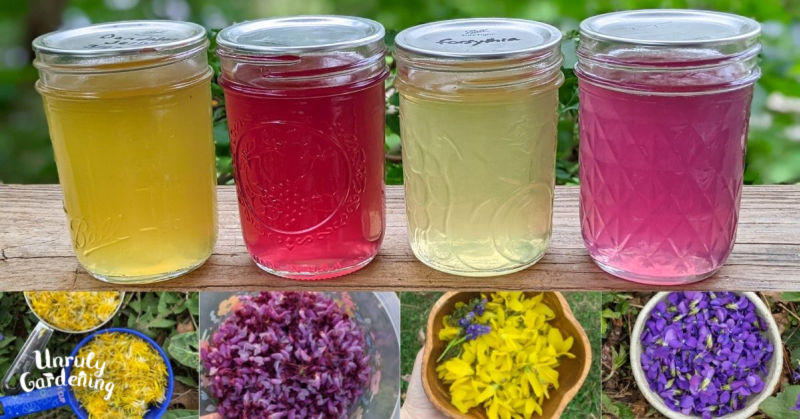
Do you have any other jelly recipes that use flowers?
Yes, we do! Check out our Edibles category right HERE to browse through our various food recipes – which, at the time of writing this post, features several floral jelly recipes for you to make and enjoy!
We have tons more planned to add as time goes on and the seasons bring us more things to harvest and forage- so keep an eye out, if you’re interested in creative jelly making!

Black Locust Flower Jelly
Equipment
- a saucepan for boiling water
- heatproof pitcher or container, for infusing the flowers
- a strainer, to strain the flower infusion
- set of measuring cups
- 1 tablespoon measuring spoon
- heavy-duty 6-8 quart pot or stockpot
- a bowl that will hold 2 1/2 cups of sugar
- an equal sized or slightly smaller bowl, for the pectin
- 4 half-pint jelly jars, with their lids and rings
- ladle, for spooning hot jelly into hot jars
- water bath canner with rack, if canning your jelly
Ingredients
For the black locust flower tea
- 2 cups black locust flowers, with the stems removed
- 3 cups water
For the black locust flower jelly
- 2 1/2 cups black locust flower tea infusion that has been steeped for 12 to 24 hours
- 2 tbsp lemon juice
- 2 1/2 cups sugar
- 1 pack Sure-Jell no or low sugar needed pectin (1.75 oz pink box)
- 1/2 tsp butter – optional, to add at any point during cooking to reduce foam in your jelly
Instructions
To make the black locust flower tea
- Bring 3 cups of water to a boil in a saucepan.
- While the water heats, place the black locust flowers into the heatproof container or pitcher.
- Stir briefly and cover with a lid or saucer.
- Steep for 12-24 hours. The tea in the batch shown in the photos was steeped for 18 hours.
- After 1 to 2 hours of steeping at room temperature, move the container to the refrigerator to finish infusing, so it won't spoil.
- After the desired infusing time, strain the flowers out of the tea. The tea will be a pale yellow color.
- Use the tea right away to make jelly, or refrigerate for 24 hours, or freeze for longer storage.
To make the black locust flower jelly
- If you're water bath canning, start heating the water in your canner.
- Heat your jars by keeping them in the water bath canner, a pot of boiling water, or your dishwasher set to sanitize cycle. (You want them hot when pouring in hot jelly, or they could crack.)
- Add 2 tbsp lemon juice to the flower tea.
- Pour the tea and lemon juice mixture into the pot.
- Measure 2 1/2 cups of sugar into a bowl.
- Scoop out 1/4 cup of that sugar and place it into a new bowl.
- Add the pack of pectin to the smaller bowl of sugar (containing 1/4 cup) and stir well.
- Add the pectin, mixed with the 1/4 cup sugar, to the black locust flower tea and lemon juice in the pot.
- Turn the burner to high heat and stir constantly until the mixture reaches a full rolling boil.
- Add the remaining sugar and return it to a full rolling boil, stirring constantly.
- Boil for one minute, still stirring constantly. The jelly will boil up significantly at this point.
- After one minute, remove the pot from the heat.
- Working quickly but carefully, remove the hot jars onto a towel, and ladle or pour the hot jelly mixture into them.
- If you plan to water bath can your jelly, leave a 1/4 inch headspace at the top of each jar.
- Wipe the rims with a damp paper towel, to remove any sticky bits of jelly that might interfere with the jars sealing well.
- Cover the jars with their lids and screw the rings on firmly.
- For longer storage, you can optionally water bath can your jelly.
To water bath can black locust flower jelly
- After filling the jars and placing the lids and rings on them, carefully lower them into the hot water of a water bath canner. (Use a canning rack if available, or a canning jar lifter.)
- Cover the canner with its lid and heat the water to a boil over medium high heat.
- Boil the jars, with the lid on the canner, for 10 minutes.
- After 10 minutes, remove the lid carefully, and remove the jars. (Be careful of the steam when you open the lid – it's hot!)
- Place the jars on a towel and leave them undisturbed for at least 12 to 24 hours.
Shelf life
- Store any jars that failed to seal in the refrigerator and use within 3 weeks.
- Successfully sealed jars are shelf-stable and can be stored for 1 year. Once opened, refrigerate and use within 3 weeks.

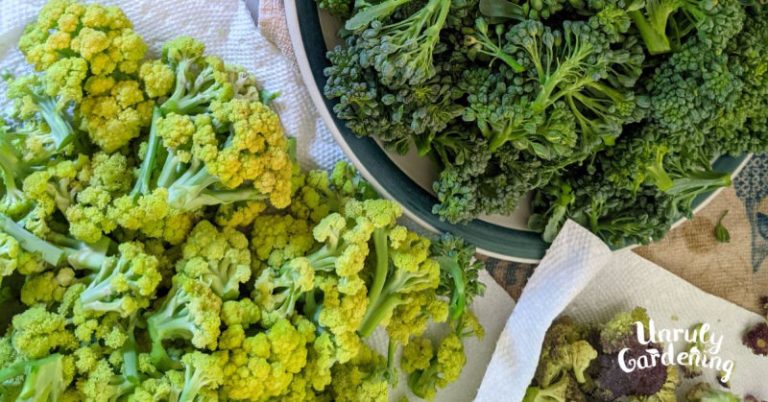
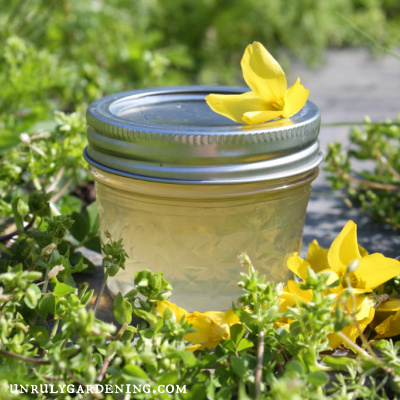
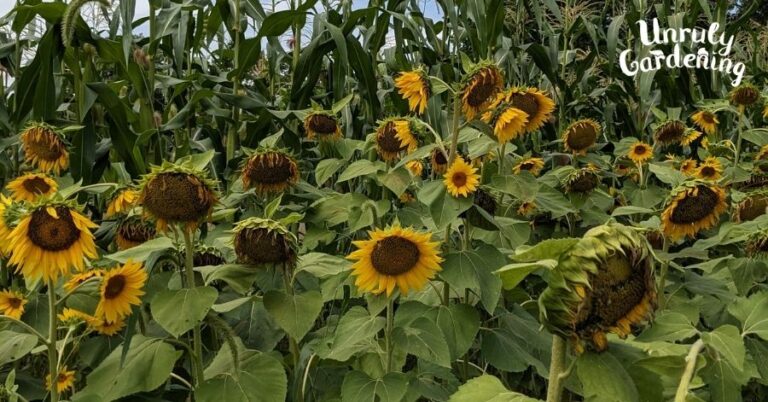
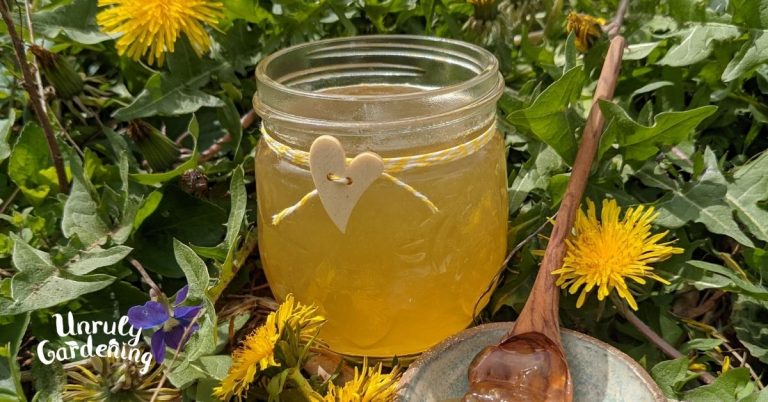
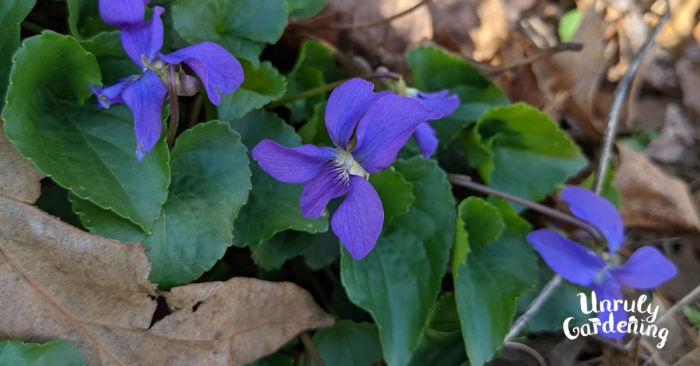
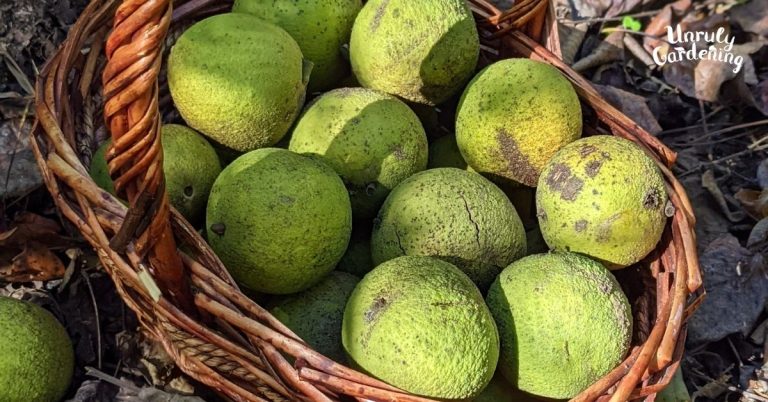
I’m getting ready to make this and wanted to know if there is a reason for this jelly to be low sugar specifically or is that your personal preference? I mean, is it sweeter than usual floral jellies?
Hi Felicia! It’s only for personal preference – we try to minimize the sugar amount in our flower jellies by using the no/low sugar kind of pectin.
It’s not sweeter than other floral jellies, so you could always use the regular pectin & regular amount of sugar found in most floral jelly recipes.
(Just use black locust flowers instead of something like violet, dandelion, etc flowers.)
Good luck with your jelly – I hope you enjoy it! 🙂
Thank you for responding! I making some up today. I’ll stick with your recipe for this. The floral jellies I’ve tried this year have had:
2c flowers
4c water
4TBSP lemon juice
4c sugar
I’d be afraid of the jelly not setting if I sealed something out. This is my first season ever making any jelly and it had been so fun trying out all the different spring blooms!